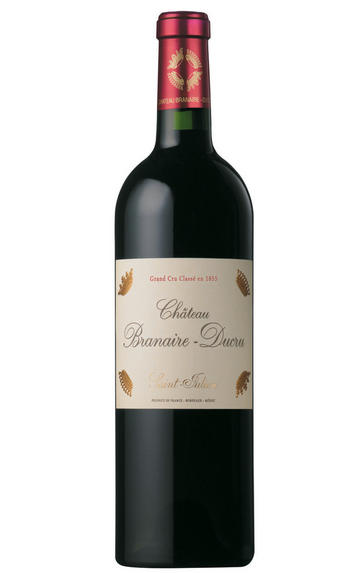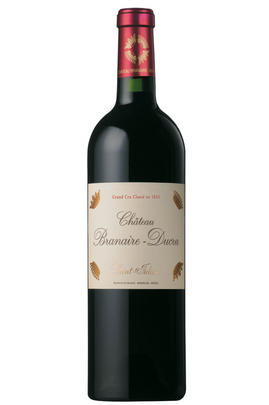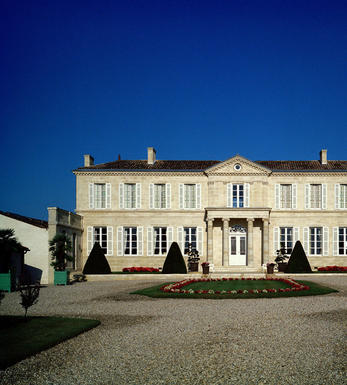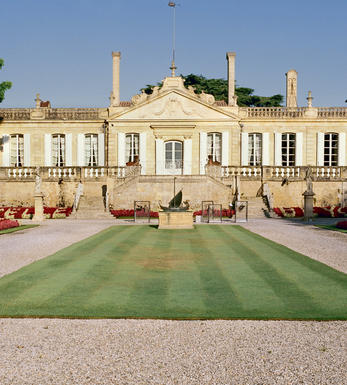
2005 Château Branaire-Ducru, St Julien, Bordeaux

Critics reviews
The 2005 Branaire-Ducru is really stepping up through the gears and is definitely worth seeking out. Deep in colour, it has an exquisite definition on the nose: blackberry, cedar, wild mint and sous-bois. There is a vibrant energy to this 2005 that sets it apart. The palate is extremely well-balanced with crisp acidity. Tensile towards its pliant finish that has softened slightly in recent years. This vintage is perfect to drink now, though personally, I would afford it another three or four years in bottle.
Drink 2025 - 2050
Neal Martin, Vinous.com (November 2023)
The 2005 Branaire-Ducru is a gorgeous, super-expressive wine that captures all of the natural radiance of the year. Black cherry, leather, spice, cedar, tobacco and scorched earth envelop the palate, framed by silky tannins that give this supple Saint-Julien so much charm. The 2005 is a very easy wine to drink and enjoy today, but it's got the stuffing to develop beautifully for years to come.
Drink 2022 - 2040
Antonio Galloni, Vinous.com (April 2021)
66% Cabernet Sauvignon, 30% Merlot and 4% Petit Verdot; 3.68 pH; 13.3% alcohol. The grapes were harvested between September 20 and October 10.
Bright dark ruby-red with a pale rim. Blackcurrant, red cherry, minerals and sweet aromatic spices on the enticing, exotic nose. Then pure, clean and refined in the mouth, showing terrific sweetness to the flavours of blackcurrant, black cherry, mocha and wet stone. This sizable wine offers wonderful poise and precision thanks to vibrant but harmonious acidity. The finish is long and seamless, with a plush, tactile mouthfeel. This is an outstanding Branaire-Ducru and easily one of the best wines ever made at the estate.
Ian D'Agata, Vinous.com (March 2014)
60% new oak
The nose is just utterly delicious, smoky and seductive. This is why you don't drink St-Julien in a great vintage too young, it has suddenly started to sing and take on all these aromatics dimensions. It's displaying a floral, violet edge, with truffles and leather. The fruit is still there but it has started to be accompanied by an orchestra of other flavours. This is my favourite wine in the series, hands down. Showing so perfectly today. The tannins are still there but they are melted, and the whole thing has just come together.
Drink 2018 - 2030
Jane Anson, Decanter.com (December 2018)
Floral nuances combined with lots of mulberry, raspberry and sweet blackcurrant fruit are followed by a medium to full-bodied, beautifully pure, textured, complex wine with soft tannin. It should drink well relatively early on (2-3 years) and last 15 or more.
Drink 2015 - 2030
Robert M. Parker, Jr., Wine Advocate (June 2015)
Showing well, the Branaire-Ducru was dominated by Cabernet Sauvignon (65%) with 28% Merlot and a bit of Cabernet Franc and Petit Verdot. Despite picking fairly early (20 September), the wine was silky and subtle and showed very well-managed tannins. Pronounced blackcurrant fruit with accents of cedar and smoke were apparent from the start and lingered enticingly on the finish.
Drink 2021 - 2040
Charles Curtis MW, Decanter.com (June 2021)
Dark red-ruby. Plum, chocolate and some exotic smoky oak on the nose. Lush, smooth and sweet but not at all over the top; offers unusual volume and breadth for Branaire. The exotic aspect carries through on the palate, and yet this wine is holding plenty of material in reserve. Finishes with building tannins and excellent length. Offers superb potential for ageing.
Stephen Tanzer, Vinous.com (May 2008)
About this WINE

Château Branaire-Ducru
Classified as a fourth growth in 1855, Ch. Branaire-Ducru makes pure and classic St Julien. The estate has recently passed from father to son: the widely respected Patrick Maroteaux – who had served at various times as president of the Union des Grands Crus de Bordeaux and the St Julien appellation – sadly passed away in 2017. His son François-Xavier has picked up the baton and continues his father’s legacy. The Maroteaux family bought the property in 1988 and have invested considerably in the vineyard and winery since. Superstar consultant Eric Boissenot advises here, as he does with many of the Left Bank’s top estates, including the Médoc’s four first growths.

St Julien
St Julien is the smallest of the "Big Four" Médoc communes. Although, without any First Growths, St Julien is recognised to be the most consistent of the main communes, with several châteaux turning out impressive wines year after year.
St Julien itself is much more of a village than Pauillac and almost all of the notable properties lie to its south. Its most northerly château is Ch. Léoville Las Cases (whose vineyards actually adjoin those of Latour in Pauillac) but, further south, suitable vineyard land gives way to arable farming and livestock until the Margaux appellation is reached.
The soil is gravelly and finer than that of Pauillac, and without the iron content which gives Pauillac its stature. The homogeneous soils in the vineyards (which extend over a relatively small area of just over 700 hectares) give the commune a unified character.
The wines can be assessed as much by texture as flavour, and there is a sleek, wholesome character to the best. Elegance, harmony and perfect balance and weight, with hints of cassis and cedar, are what epitomise classic St Julien wines. At their very best they combine Margaux’s elegance and refinement with Pauillac’s power and substance.
Ch. Léoville Las Cases produces arguably the most sought-after St Julien, and in any reassessment of the 1855 Classification it would almost certainly warrant being elevated to First Growth status.
Recommended Châteaux: Ch. Léoville Las Cases, Ch.Léoville Barton, Ch Léoville Poyferré, Ch. Ducru-Beaucaillou, Ch Langoa Barton, Ch Gruaud Larose, Ch. Branaire-Ducru, Ch. Beychevelle

Cabernet Sauvignon Blend
Cabernet Sauvignon lends itself particularly well in blends with Merlot. This is actually the archetypal Bordeaux blend, though in different proportions in the sub-regions and sometimes topped up with Cabernet Franc, Malbec, and Petit Verdot.
In the Médoc and Graves the percentage of Cabernet Sauvignon in the blend can range from 95% (Mouton-Rothschild) to as low as 40%. It is particularly suited to the dry, warm, free- draining, gravel-rich soils and is responsible for the redolent cassis characteristics as well as the depth of colour, tannic structure and pronounced acidity of Médoc wines. However 100% Cabernet Sauvignon wines can be slightly hollow-tasting in the middle palate and Merlot with its generous, fleshy fruit flavours acts as a perfect foil by filling in this cavity.
In St-Emilion and Pomerol, the blends are Merlot dominated as Cabernet Sauvignon can struggle to ripen there - when it is included, it adds structure and body to the wine. Sassicaia is the most famous Bordeaux blend in Italy and has spawned many imitations, whereby the blend is now firmly established in the New World and particularly in California and Australia.


Buying options
Add to wishlist
Description
This wine is gorgeous, with a lovely perfumed floral nose of violets and black fruit supported by a pure, creamy and elegantly structured palate. Classy blackberries and cassis shine through with great precision, alongside minerality and firm tannins. The wines of this estate are renowned for their purity, but in 2005 they have taken on that extra richness that they required to make them truly outstanding.
Berry Bros. & Rudd
wine at a glance
Delivery and quality guarantee